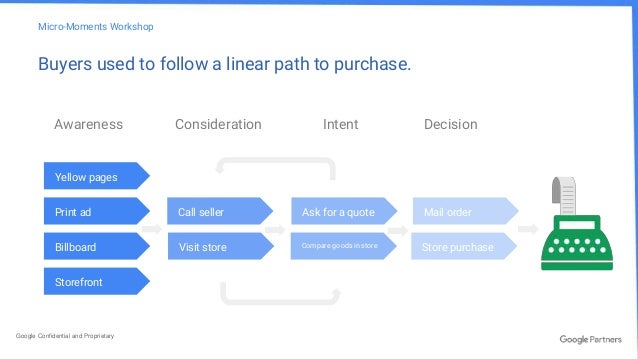How Digital Marketing Transformed the Consumer Buying Process
Marketing has changed more in the past couple years than it did in a decade before. Have you adapted?

CREDIT: Getty Images
The business model used to be a pretty universal term. The same skeleton applied to many businesses, and it involved a customer becoming aware of a product (billboard, print ad, yellow pages, etc.), speaking with the seller and thinking their purchase over for days (or weeks) after getting a quote, and (hopefully) an eventual purchase. That process could drag on and on, decreasing the likelihood of a sale with each and every passing step of the linear path.

Fortunately for both businesses and consumers, that changed as technology and digital practices evolved, streamlining every step of user behavior and the business model. Now, if someone needs something, they can go online, find exactly what they're looking for, and have it in just one day. Or, if someone is curious about a product or service, he or she can research online, read reviews from other buyers, and watch product demos before making a purchase.
It's that kind of accessibility that has changed the business model from its traditional and linear path into a constantly moving target with search and digital marketing at the center.

While the way consumers go about buying has in some ways been simplified by digital marketing (i.e., fewer steps, purchasing power at the click of a button), the ways they interact with and reach businesses has multiplied. And, while competition has increased significantly among businesses, there has never been more opportunity for growth and success.
Why You Have to Adapt
Over the past decade, digital marketing practices have unlocked avenue after avenue for revenue, growth, and business exposure online, and it's no surprise why.
In just the past few years, mobile searches have exceeded desktop searches. Now, Google factors mobile-friendliness into its algorithm. 77% of customers read online reviews before making a purchase, 3 million advertisers now use Facebook to reach their customers, 93% of purchases made by online shoppers are influenced by social media, online sales from cyber Monday topped $3 million in 2015-the list goes on.
What all of these figures show is that as consumer behavior has changed, so has the business model. As your competition accounts for that and works their marketing budget around digital efforts, so should you.
Who Has to Adapt
Every business and/or brand can and should adapt to the growing necessity of digital marketing, firstly because it offers multiple opportunities for advancement, secondly because your audience will benefit from an online presence.
What many people fail to realize is that anyone can enter the realm of digital marketing and find significant success. Brick-and-mortar businesses, mom and pop shops, and other traditional businesses often express hesitancy towards digital marketing, and it makes sense. How can one little shop out-do a huge corporation? How can a small brand compete with larger brands with much bigger budgets?
Contrary to how it may seem, there are ways that small businesses can not only leave their footprint online, but meet their audience/clientele where they're at. Yes, digital marketing encompasses vast arrays of strategies and practices, and some of them are perfect for the small business owner.
Local SEO, for example, is one of the most important factors for such businesses. 59% of users use Google every month to find reputable businesses that are nearby. By putting your business out there, you make yourself available to those customers.
Similarly, many consumers follow their favorite stores and brands on social media. By having a social media presence, even one as simple as a Facebook business page, you can cash in on the opportunity to get reviews, be recommended, and keep your customers updated on your business.
The business model has been irreparably changed by the rise of digital marketing, and the success of your business requires your participation now more than ever. Have you adapted?

clipping path
ReplyDeleteclipping path service
car photo editing services
Enjoyed reading the article above , really explains everything in
detail,the article is very interesting and effective.Thank you and good
luck for the upcoming articles